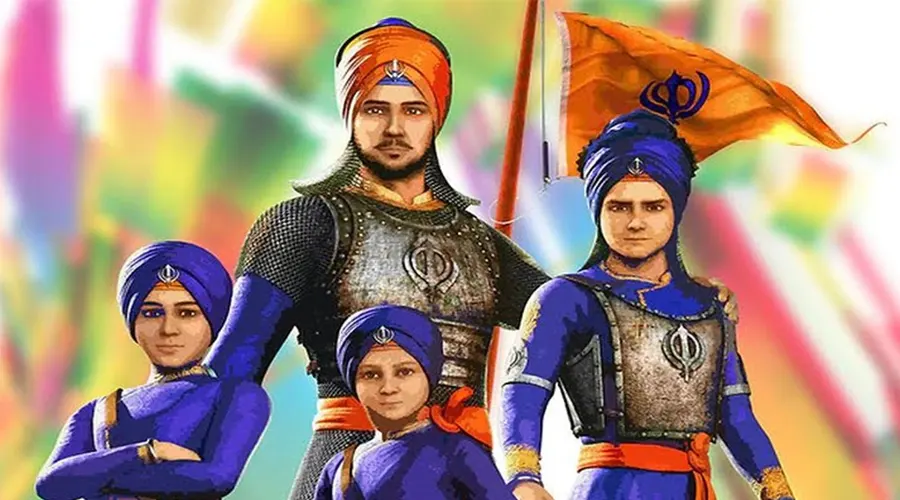Veer Bal Diwas: A look at the bravery and sacrifice of Guru Gobind Singh’s sons, aged 7 and 9
Sahibzada Zorawar Singh (9) and Sahibzada Fateh Singh (7) were killed in 1704, in events sparked by the attack on Anandpur Sahib by the armies of the Mughals and the hill kings of present-day Himachal Pradesh
Veer Bal Diwas is celebrated on December 26 in honour of four Sahibzadas of Guru Gobind Sahib Ji, who was martyred in the 17th century. Shabad Kirtan’ is performed by about three hundred Baal Kirtanis. The Government will hold interactive programs for citizens, especially children all over the nation to educate them about the story of the exemplary courage of the Sahibzades.
Guru Gobind Singh Ji was the Sikh's 10th Guru and the founder of the Khalsa community. His four sons are Shahibjada Jujhar Singh, Sahibzada Ajit Singh, Sahibzada Fateh Singh, and Sahibjada Zorawar Singh. Guruji fought 14 battles against the Mughals. Guruji’s two elder sons Ajit Singh and Jujhar Singh died fighting enemies on the battlefield at the age of 18 and 14 respectively.
Later, Guruji’s 2 youngest sons Zorawar Singh and Fateh Singh were attacked and were forced to convert to Islam. Both of them refused and declared their love for Sikhism. This enraged the Mughals and they were buried in walls. Zorawar Singh and Fateh Singh were martyred at the age of 9 and 6 respectively.
Their sacrifice and courage went down to the history of India. December 26 is the day on which Zorawar Singh and Fateh Singh were martyred. To commemorate their great sacrifice, Veer Bal.
Sahibzadey: The Four Sons of Guru Gobind Singh
Guru Gobind Singh was a philosopher, poet, spiritual master, and warrior renowned in the Sikh community for being the 10th Sikh Guru. His most important contribution to Sikhism was the establishment of the Sikh Khalsain in 1699. Other important contributions include founding the five articles of the Sikh faith, and introduction of the five Ks.
The martyrdom of Guru Gobind's four sons is also an important part of Sikh history. Known as the Sahibzadey, all four brothers lost their lives to preserve their Sikh identity in the face of ruthless Mughal invaders.
The Bade Sahibzadey
Baba Ajit Singh and Baba Jujhar Singh were the two eldest sons and are collectively known as the “Bade Sahibzadey”. Both were trained and educated as saint soldiers, with Baba Ajit Singh being held in high regard for his swordsmanship and his numerous acts of bravery.
On a trip to Chamkaur with their father and around 40 other Sikhs, they were attacked by Mughal forces. The might of the Mughal forces was too much for the Sahibzadey, and both lost their lives fighting the Mughals.
The Chhote Sahibzadey
Baba Fateh Singh and Baba Zorawar Singh were the younger sons of Guru Gobind Singh. Collectively remembered as the “ChhoteSahibzadey”, they were captured in Sirhind by Mughal forces along with their mother, Mata Gujri. Baba Zorawar Singh was 9 and Baba Fateh Singh was 6.
After facing overnight imprisonment, Sirhind governor Wazir Khan offered the children freedom, prosperity, and wealth, but only if they converted to Islam. Both youngsters stuck true to their faith but paid with their lives. Wazir Khan ordered the sons to be bricked alive until suffocation, following which they were decapitated.
The extraordinary feats of martyrdom showcased by all four brothers are remembered to this day and remain integral parts of the Sikh culture. Gurdwaras around the world commemorate the lives of the Sahibzadey and their work to uphold Sikh culture and identity.


Comments (0)